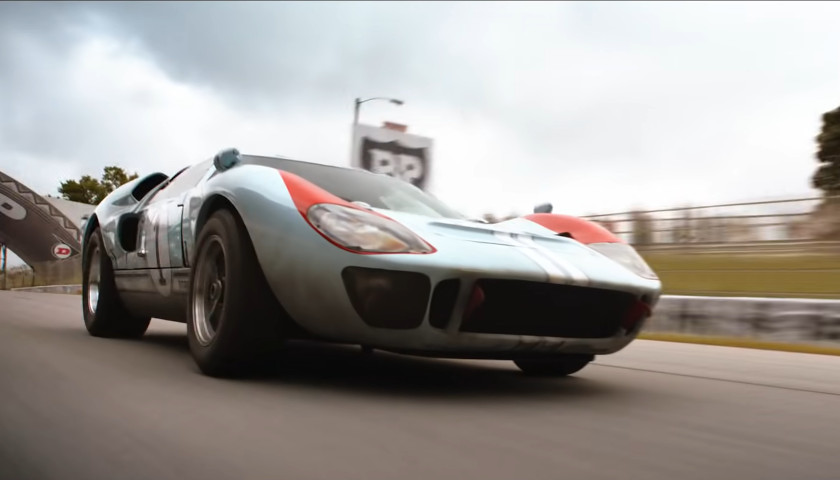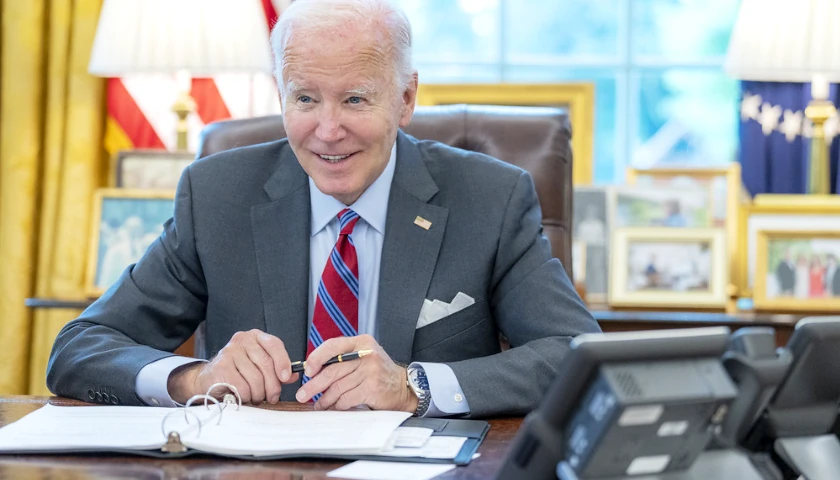by John Couretas
There is a scene in the terrific new film Ford v Ferrari where Henry Ford II grills his lieutenant Lee Iaccoca about the failed bid to acquire Enzo Ferrari’s racing car enterprise. Ford learns that Ferrari has a message for him, and Iacocca dutifully delivers: “He said Ford makes ugly little cars in ugly factories.”
And there the story takes off. Enzo Ferrari sells to Fiat, and Ford vows that “we’re gonna bury Ferrari at Le Mans,” the grueling 24 hour race that pushes racing machine and drivers to the limits. The story is also a clash of visions. Ford can stand in his executive suite of the Glass House in Dearborn, Michigan, and gesture regally to the distant stacks of the stupendous River Rouge Complex and rightly claim that his company knows how to go to war. But now, instead of building bombers to defeat Hitler, Hank the Deuce is about to give his racing team a blank check to beat Ferrari.
Against Ford’s mass scale industrialization and Organization Man culture, Ferrari was about the uncompromising, unstinting pursuit of excellence. The company only sold cars to the public to finance its racing teams, which explains why it was broke and in need of a partner in the mid-1960s. The bright red racing Ferraris were not only fast, they were beautiful. In the Scuderia Ferrari workshops in Italy, one man built an engine from scratch, another assembled the transmission piece by piece. Where Ford workers were cogs on an assembly line, performing the same mindless task every 45 seconds, Ferrari craftsmen were proud virtuosos of the socket wrench and welding torch. (If you want a young person to find a path to artisanal “soulcraft,” why not encourage them to spend a couple years learning how to tear down an engine?)
The key figures in Ford v Ferrari are Carroll Shelby, the legendary race team manager (played with droll understatement by Matt Damon) and Ken Miles, the misfit British racing car driver (captured with total authenticity by Christian Bale). Their mission is to defeat Ferrari in the 1966 24 Hours of LeMans with a new purpose built Ford GT40. It may not be as gorgeous as a Ferrari 330 P3 (“looks aren’t everything,” Shelby drily observes), but the Ford car can top 200 mph on the Mulsanne Straight and put 200,000 race fans into a joyful frenzy.
Much of Carroll Shelby’s work involves running interference for his team against the Ford “suits,” the sycophantic company men whose job it seems is to crush creativity and independence (so much for “intrapreneurship” in the 1960s). The chief advocate for the “Ford way,” is Leo Beebe, Director of Special Vehicles, whose backstabbing and serial undermining is tinged with malevolence. Lee Iacocca, the consummate marketing man, seems caught in the middle. But in the end, it’s Henry Ford II’s prerogative. His name is on the building.
Beebe sees Miles as a clear risk to the fortunes of the Ford racing team, if not a larger liability to the “win on Sunday, sell on Monday” formula in countless American showrooms. Miles is brash, a “beatnik,” a malcontent who doesn’t fit in. He’ll never be a Ford man, never learn the ways of the executive suite, or learn how to succeed by splitting the difference. Ford Motor Co., then mired in a deep sales slump, was hoping that success on the track would prove Enzo Ferrari wrong about all those “ugly little cars.”
As the story unfolds, it’s clear that Miles possesses something that Beebe does not: integrity. Miles is painfully honest and consistent to the point of ruin in his uncompromising quest for the winner’s circle. When the IRS padlocks his garage and tools for unpaid back taxes, well that’s just one of life’s many speed bumps.
It’s not wealth or celebrity that motivates Miles, it’s the perfect lap, perfection that perhaps only another driver (both Shelby and Ferrari started out as drivers) can understand. There’s a poignant scene where Miles and his son roll a GT40 to a stop on a deserted track at dusk. They sit on the pavement together.
“Look out there. Out there is the perfect lap,” Miles tell his son. “No mistakes. Every gear change, every corner – perfect. You see it?” It is the father explaining one of life’s mysteries to his son, as fathers have done for millennia. “I think so,” says the son.
“Most people can’t,” Miles assures him. “Most people don’t even know it’s out there but it is.”
The classical and Christian virtues (arête in the Greek, or habitual excellence) are all over Ford v Ferrari. These are among others honesty (truthful at all times and lacking in hypocrisy) and faithfulness (faithful to a calling, to family, to friends). Miles is faithful to his wife Mollie – the civilizing force among the alpha competitors that inhabit her life – and to the son who accompanies him to the track and garage to learn by seeing.
But prime among these virtues is undoubtedly courage. And not just the courage to push the race cars and themselves to the breaking point (the death toll from racing the Le Mans circuit totaled 11 drivers in the 1950s and 1960s alone, and a horrific crash in 1955 took the lives of 83 spectators). It’s the courage for Miles to be exactly who he knows himself to be and to act consistently with that self-understanding.
It is for the Ford men in the story to personify the vices, but it isn’t cowardice that they show so much as ingratitude. They’re perfectly comfortable with trampling on the integrity and freedom of the nonconformists of the race team as they reach for glory on the track. Ingratitude is “despicable … the most despicable thing of all,” in the words of Gregory of Neocaesarea, the third-century saint known as the Wonderworker. “For someone who has experienced something good not to try to return the favor, even if he can manage no more than verbal thanks, he must plainly be obtuse and insensitive to his benefits, or thoughtless.”
There is a scene toward the end of the film where Miles, standing in the pits, looks up to the grandstand where Enzo Ferrari is perched in his private box. They exchange glances, peers at the top of their game. Ferrari – uncompromising, demanding, proud, risking his entire enterprise on a racing program – tips his hat to Miles. The driver answers with a nod of acknowledgment.
They have enlarged the limits of what is possible, for man and machine. And in the process, have encouraged us all to push a little harder on our own limits and maybe be better for it.
– – –
John Couretas is responsible for print and digital publications, web and social media. He has more than 25 years of experience in the news and communications fields. He has worked as a staff writer on newspapers and magazines, covering business and government. John holds a Bachelor of Arts degree in the Humanities from Michigan State University and a Master of Science Degree in Journalism from Northwestern University.
Photo “Ford v. Ferrari” by 20th Century Fox.





